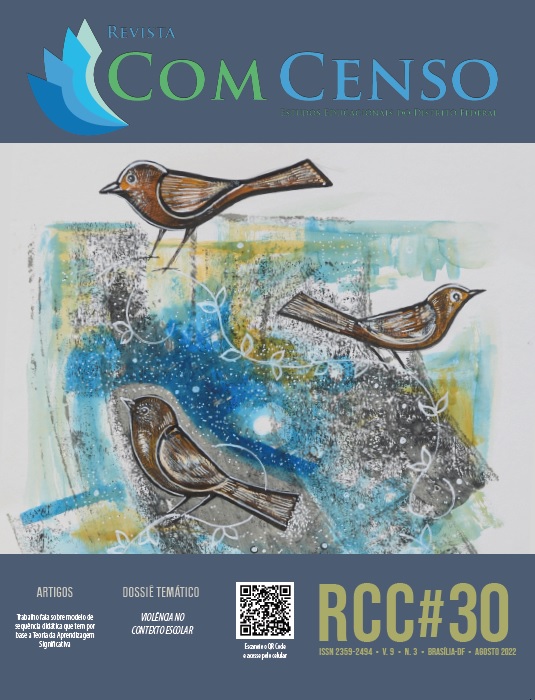Educação Antirracista: Lei 10.639/2003
Palavras-chave:
Educação. Direitos humanos. Antirracismo. Lei 10.639/2003Resumo
O presente artigo tem como objetivo investigar como se dá o trabalho realizado em duas escolas públicas de Ensino Médio do Distrito Federal a partir da implementação da Lei 10.639/2003, assim como analisar o tratamento dado à Lei e o que pode ser aperfeiçoado nas escolas em análise. As autoras são professoras efetivas da Secretaria de Estado de Educação do Distrito Federal e atuam nas escolas objeto de estudo nos componentes curriculares Língua Portuguesa e Espanhol. Logo, empregaram-se como recursos metodológicos a pesquisa de campo com observação in loco e o levantamento teórico-metodológico. A primeira parte deste excerto aborda a Lei 10.639/2003 e suas particularidades, passando pela educação em e para os direitos humanos e adentrando nas realidades das duas escolas localizadas em Regiões Administrativas diferentes: Ceilândia e Taguatinga. Ambas as instituições tratam a realidade das práticas antirracistas com vistas à excelência, porém com olhares diferenciados. Uma realiza eventos por meio de atividades elaboradas pelos discentes, Workshops ministrados por parceiros e a oferta da disciplina eletiva Preconceito, discriminação e racismo; e a outra, além do componente curricular Direitos Humanos, promove diversos eventos extracurriculares para a sensibilização massiva de toda a comunidade escolar. Assim, percebe-se que as escolas buscam trabalhar a conscientização e a desconstrução de uma prática racista secular. Constata-se também, a partir desta investigação, a necessidade de fomentar a cultura antirracista, tanto em ambiente escolar quanto em ambiente não escolar, por isso as instituições de ensino devem tratar a temática de maneira transversal, envolvendo toda a comunidade escolar em atividades diversificadas, com o fim de promover a cultura de inclusão dos negros em todos os ambientes e espaços.
Palavras-chave: Educação. Direitos humanos. Antirracismo. Lei 10.639/2003.
Title: Anti-racist education: law 10.639/2003
Abstract: This article aims to investigate the work carried out in two public high schools in the Federal District after the implementation of Law 10.639/2003, as well as to understand what are the strengths and what can be improved in schools in analysis. The authors are effective teachers at the Secretary of State for Education of the Federal District and work in schools that are the object of study with the curricular components Portuguese and Spanish. Therefore, field research with on-site observation and theoretical-methodological survey were used as methodological resources. The first part of this excerpt addresses Law 10.639/2003 and its particularities, including education in and for human rights and entering into the realities of two schools located in different Administrative Regions: Ceilândia and Taguatinga. Both institutions deal with the reality of anti-racist practices with a view to excellence, but with different perspectives. One holds events through activities developed by students and Workshops given by partners, and the other, in addition to the Human Rights course, promotes several extracurricular events for massive awareness of the entire school community. Thus, it is clear that schools seek to work on the awareness and deconstruction of a secular racist practice. From this investigation, it is also verified the need to foster an anti-racist culture, both in the school environment and in the non-school environment, which is why educational institutions must address the issue in a transversal way, involving the entire school community in diversified activities, in order to promote a culture of inclusion of black people in all environments and spaces.
Keywords: Education. Human rights. Anti-racism. Law 10.639/2003.









